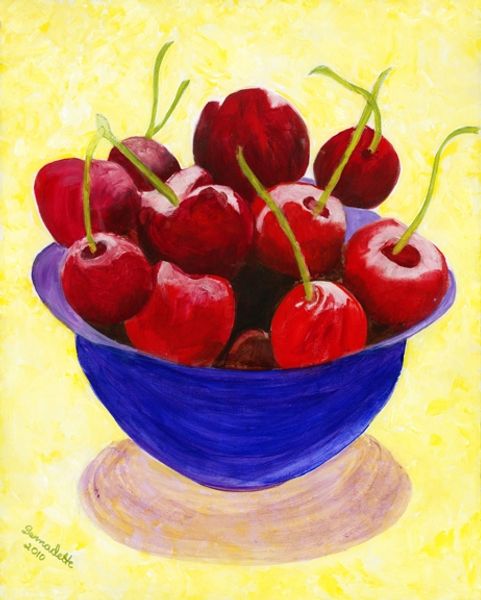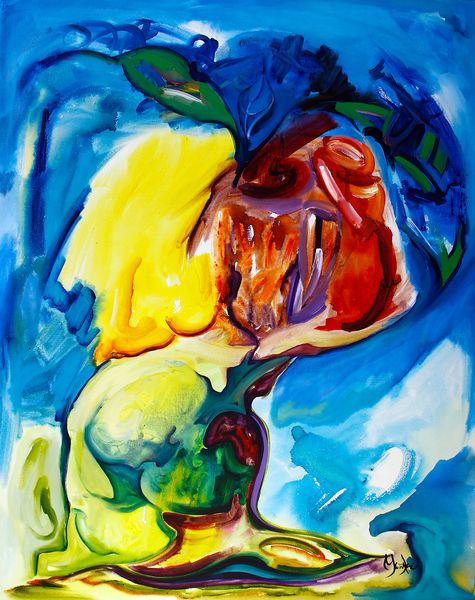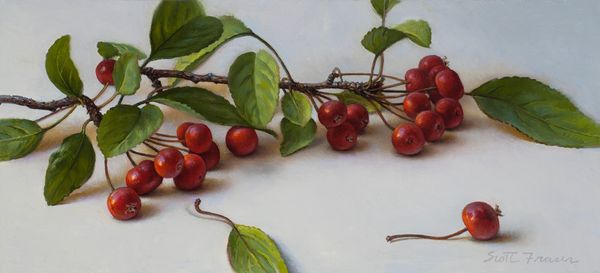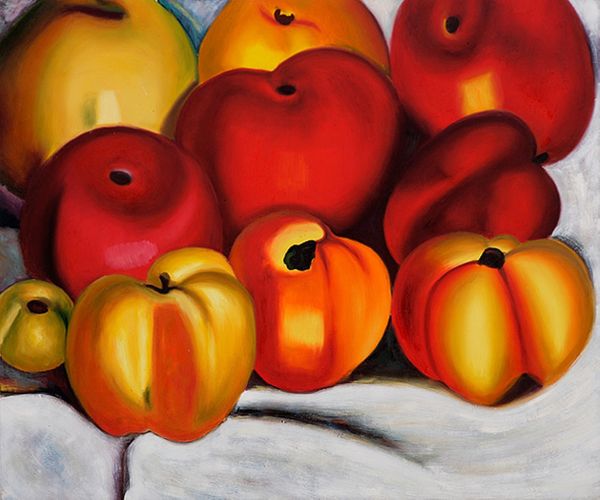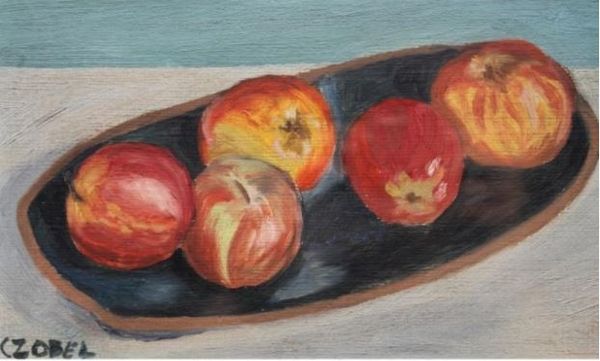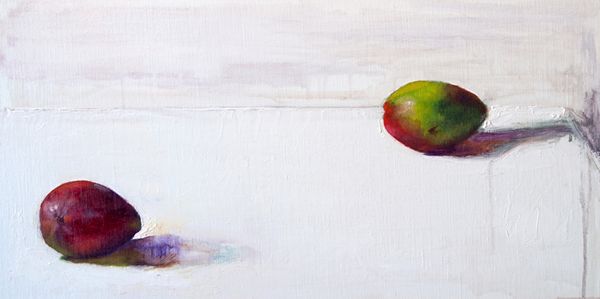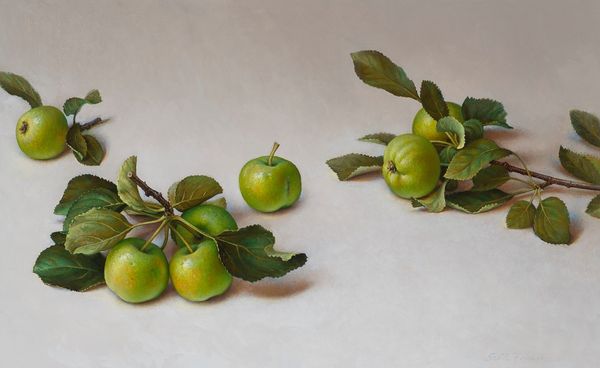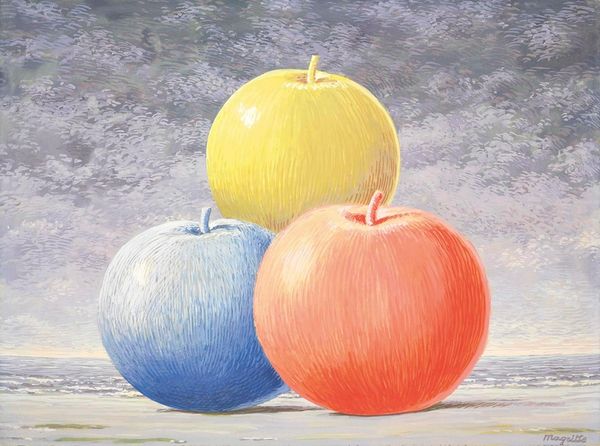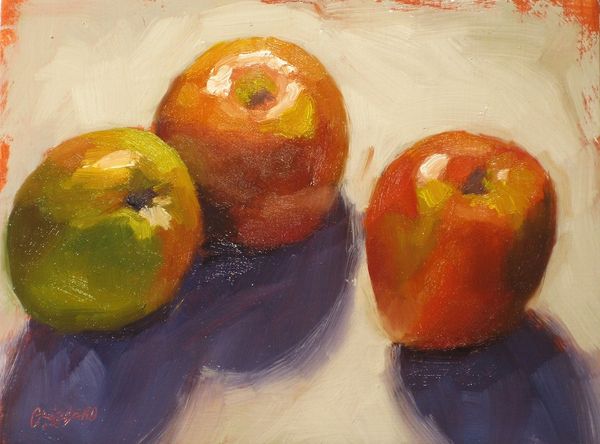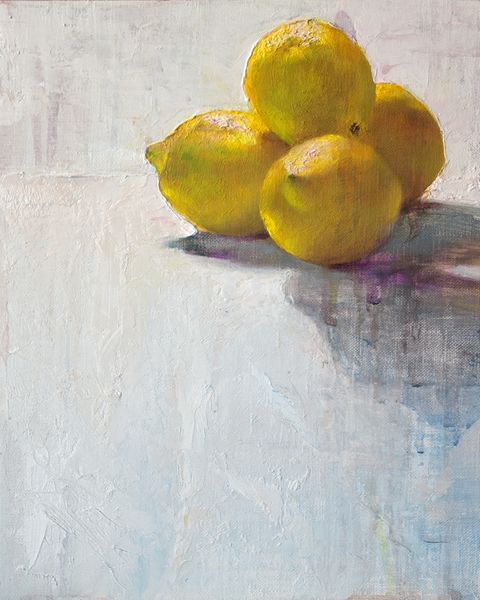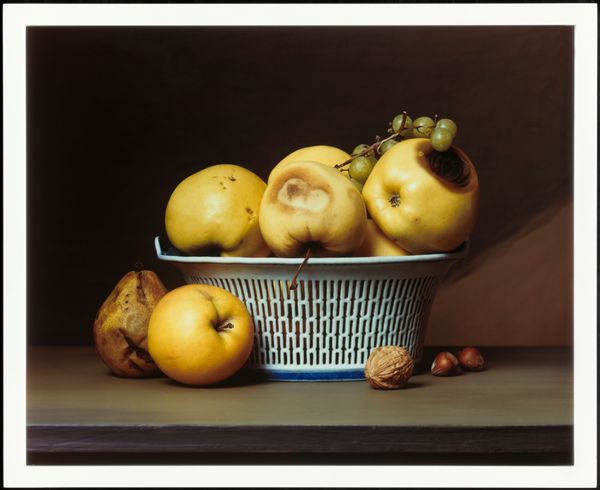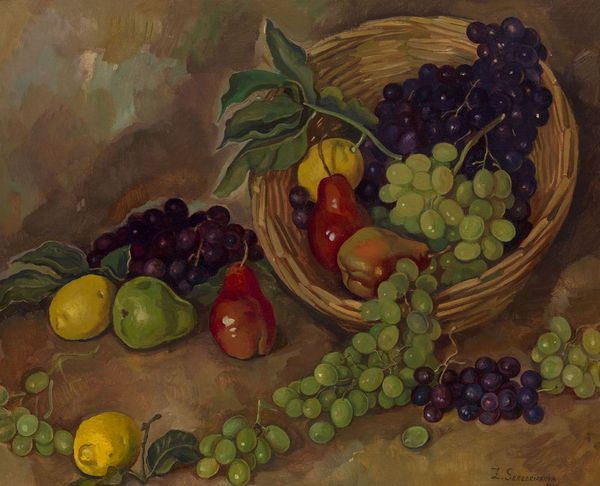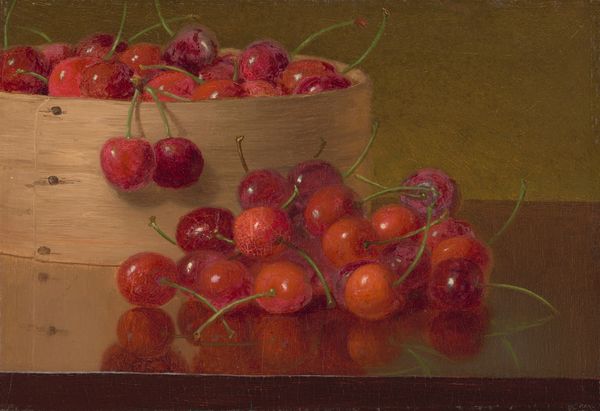
Copyright: Bernadette Resha,Fair Use
Curator: Well, isn't this charming? The watercolour painting we're looking at is called "Desirable" by Bernadette Resha, painted in 2015. It seems to be inspired by still life and plein-air styles and prominently features several red apples still on a branch against a blue sky. Editor: Immediately, I’m struck by the tension between the title, “Desirable,” and the slightly awkward cropping. It disrupts that classic still life feeling and hints at mass production, doesn't it? As if these could be ANY apples. Curator: That’s interesting. I see the watercolor technique here as referencing Impressionism; and Impressionism always had complicated relationship to labor. The fast, sketch-like strokes evoke immediacy and a sense of being out in the orchard, painting rapidly *en plein air*. Editor: But that association with leisure hides the commercialization of agriculture. How these apples might enter our own systems of consumption is crucial. Are they painted to merely stimulate appetite, or to encourage reflection on what's on our dinner tables? The bite taken out of the top apple is a nice, complicated touch, hinting at imperfection and perhaps, again, that this painting is a scene within the cycle of consumption. Curator: The watercolor medium itself speaks to larger structures of creation as well; in many ways, a much less controlled process than oil paints or even other photographical renderings would allow, meaning that some part of this "desire" is dictated by a natural inclination that supersedes the market and points back towards older forms of symbolic still life. We aren't entirely beholden to markets and industry. Editor: Perhaps, but isn’t all consumption symbolically-charged? The light shining through those green leaves is interesting to note: as if illuminating something not traditionally “desirable," further reinforcing an underlying cultural and social construct. That even the natural world isn’t entirely neutral. Curator: True. The material processes of making this artwork and the social implications in how and where art like this lives really feed into a greater whole, far outside the individual "vision." I suppose in that way it does transcend a classical idea of the still life as merely aesthetic and "desirable." Editor: Exactly, looking at how it moves in and out of traditional boundaries and definitions allows it a modern political and cultural place within a variety of other discussions, like food insecurity or sustainability in visual form.
Comments
No comments
Be the first to comment and join the conversation on the ultimate creative platform.
